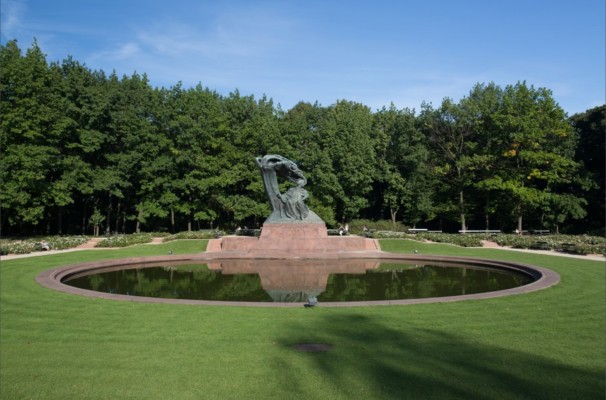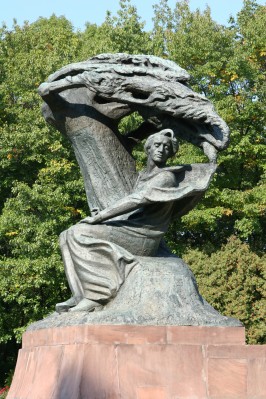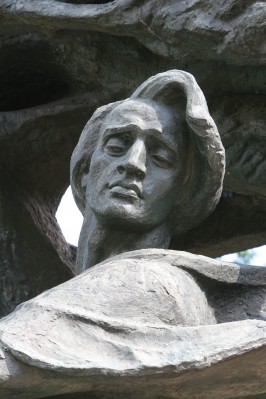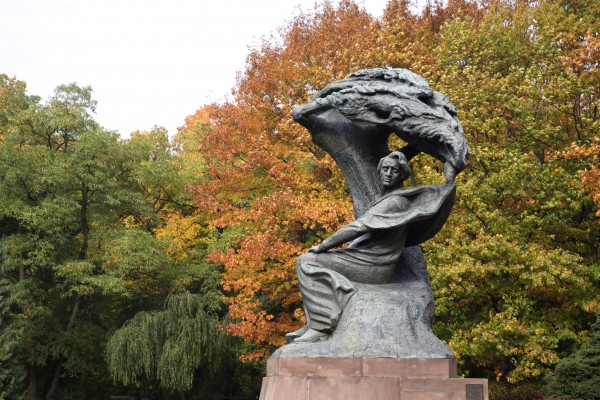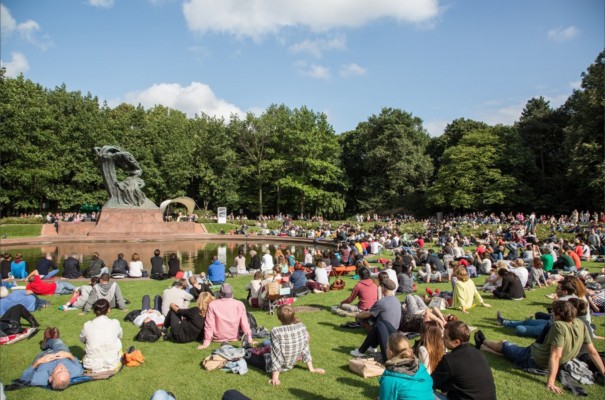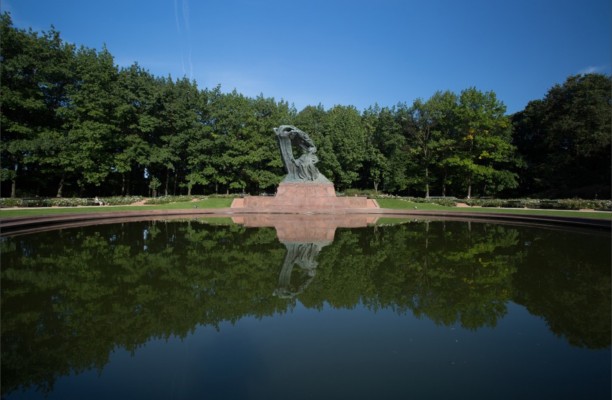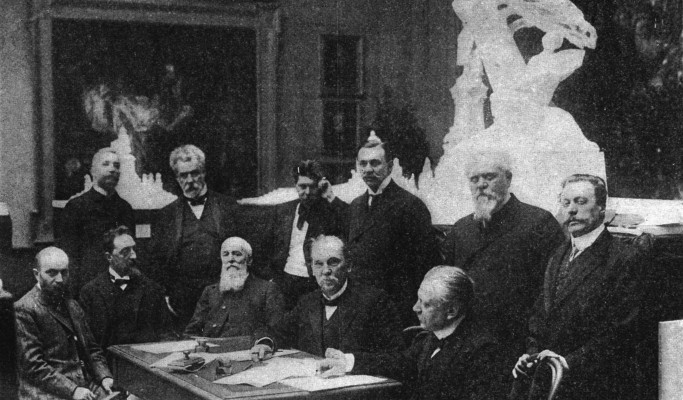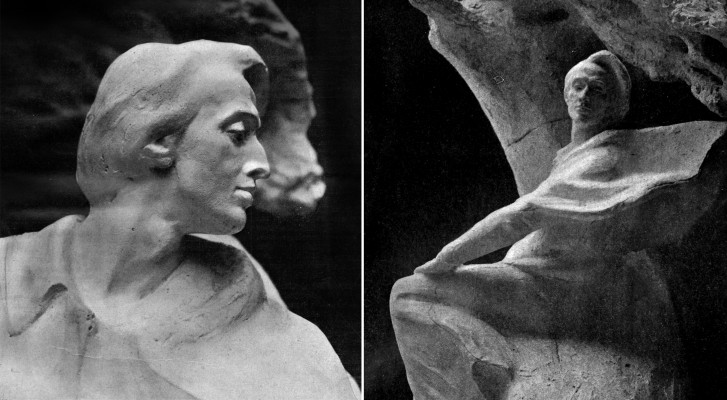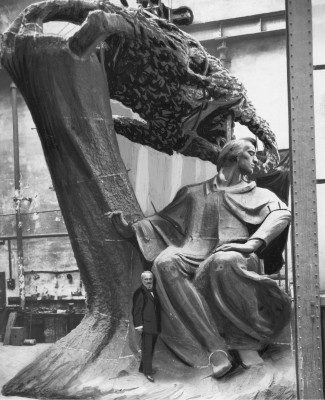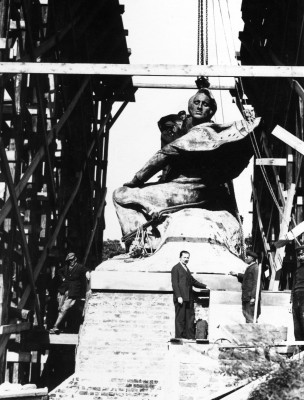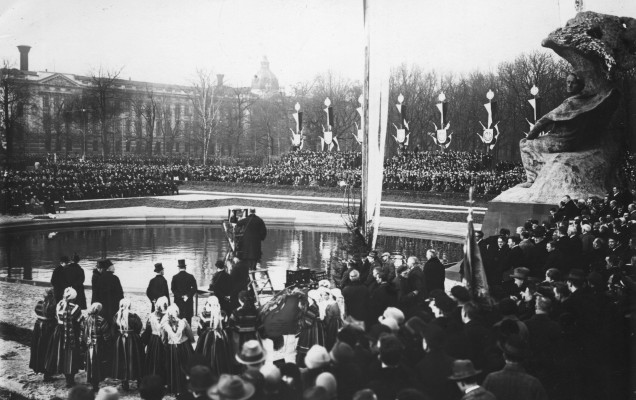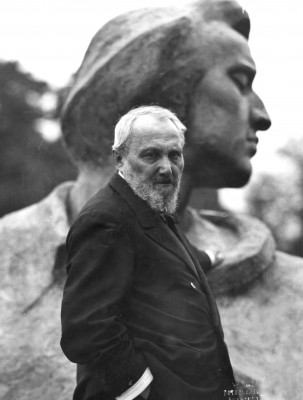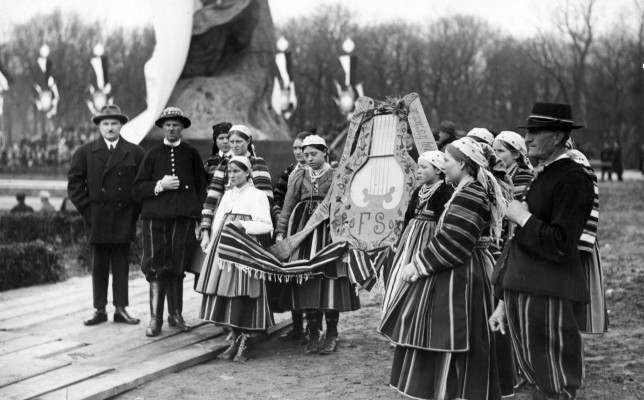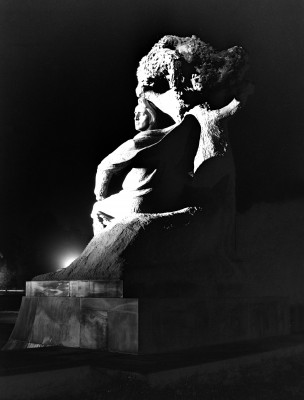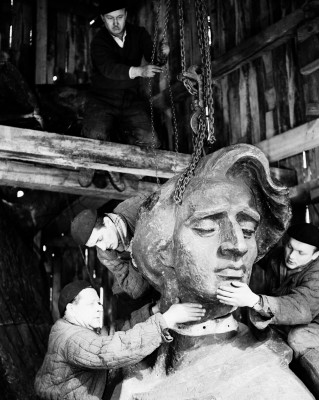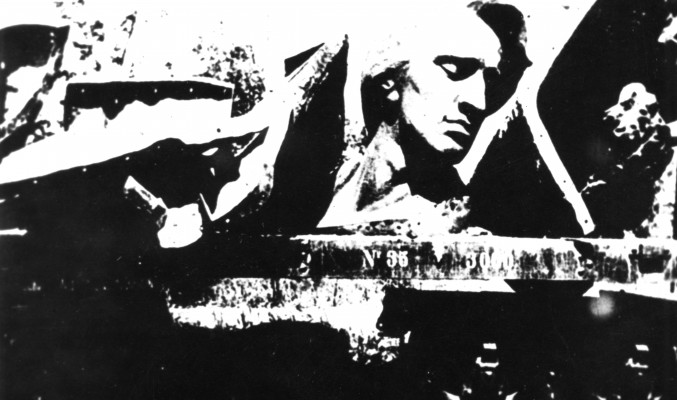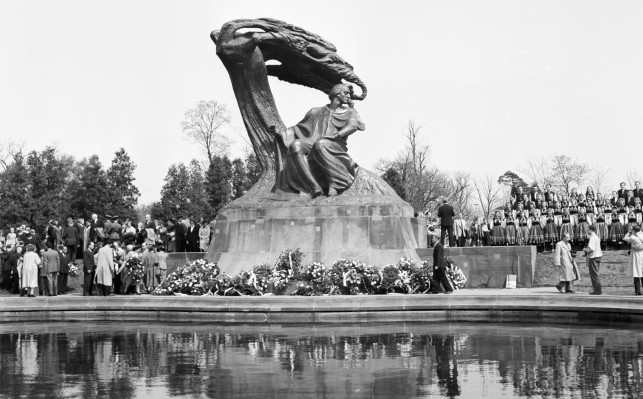
THE FRYDERYK CHOPIN MONUMENT
The monument to the outstanding Polish composer Fryderyk Chopin (1810–49) is the best-known Polish sculpture in the world. Situated close to the Belvedere Palace on Aleje Ujazdowskie, it was designed by Wacław Szymanowski, a prominent artist, sculptor and musician from the turn of the twentieth century. In 1908 his design won the competition to create a monument to commemorate the centenary of the composer’s birth which fell in 1910. Tsar Nicholas I gave his consent to erecting the statue after yielding to the requests of Adelajda Bolska, a Polish prima donna. However, the monument was not installed until 1926, a few years after Poland had regained independence.

The bronze monument depicts the Polish composer sitting under a weeping willow. The branches of the tree are falling as if swept by a strong wind to create a picturesque setting. Above Chopin’s head they take the form of a hand palm. The artist’s figure seems to blend with the tree, while his coat is flapping in the wind. Chopin was shown as a musician seeking inspiration, slightly tilted back, engrossed in the sounds of nature with his eyes half-closed. His right hand is raised in the air – as if above the keyboard of an invisible piano, just when the artist is looking for the right tone. The whole composition reminds of a monumental harp.
In 1940, the monument was destroyed by the Nazis. It was broken into pieces and sent to foundries to be melted down. The reconstructed monument was unveiled in 1958.
The round pool made of red sandstone and the natural greenery background slightly at a distance form an inseparable feature of the setting. The garden with the pedestal and the pool were designed by the famous architect and conservator Oskar Sosnowski. In the summer, every Sunday, Chopin concerts are held at the foot of the monument.
